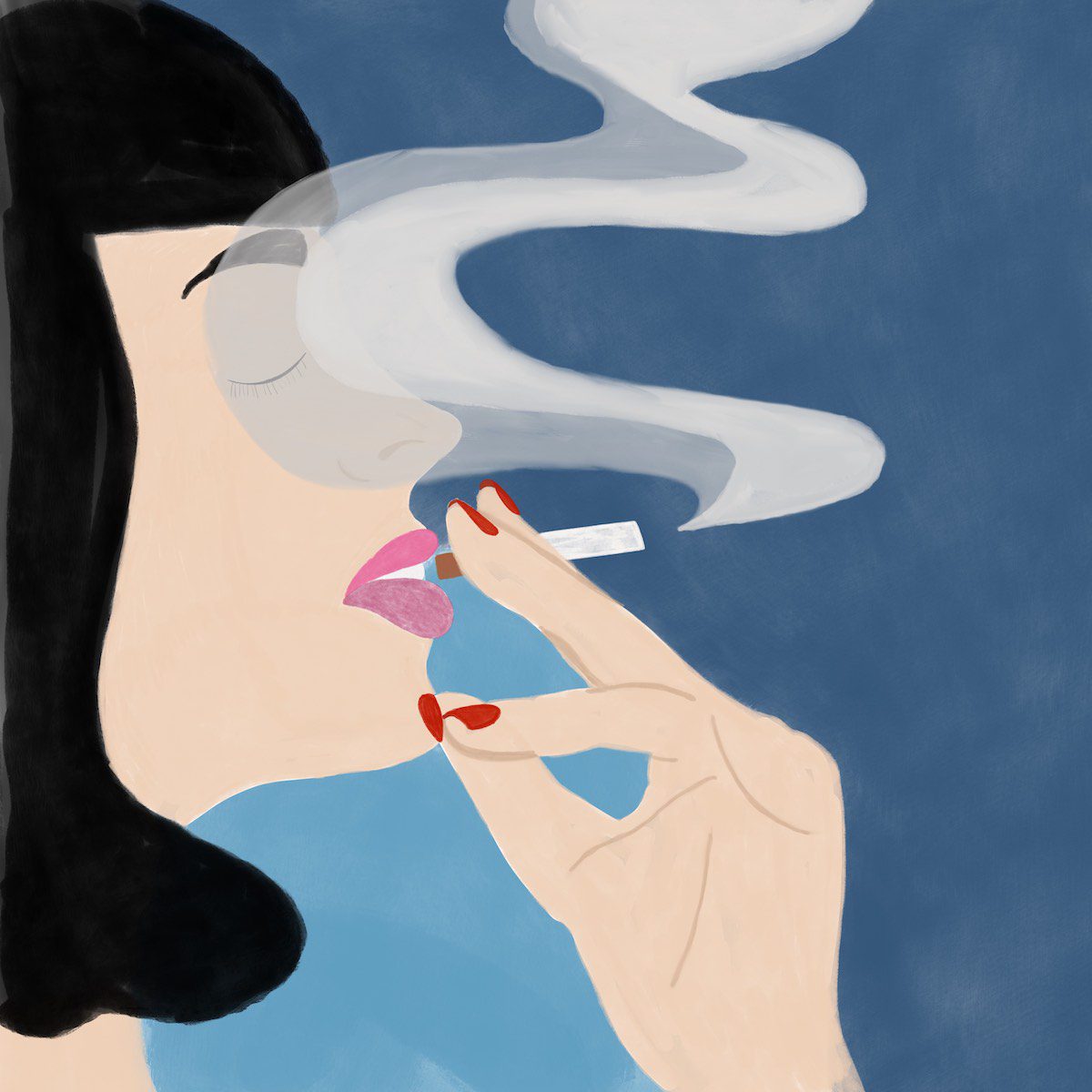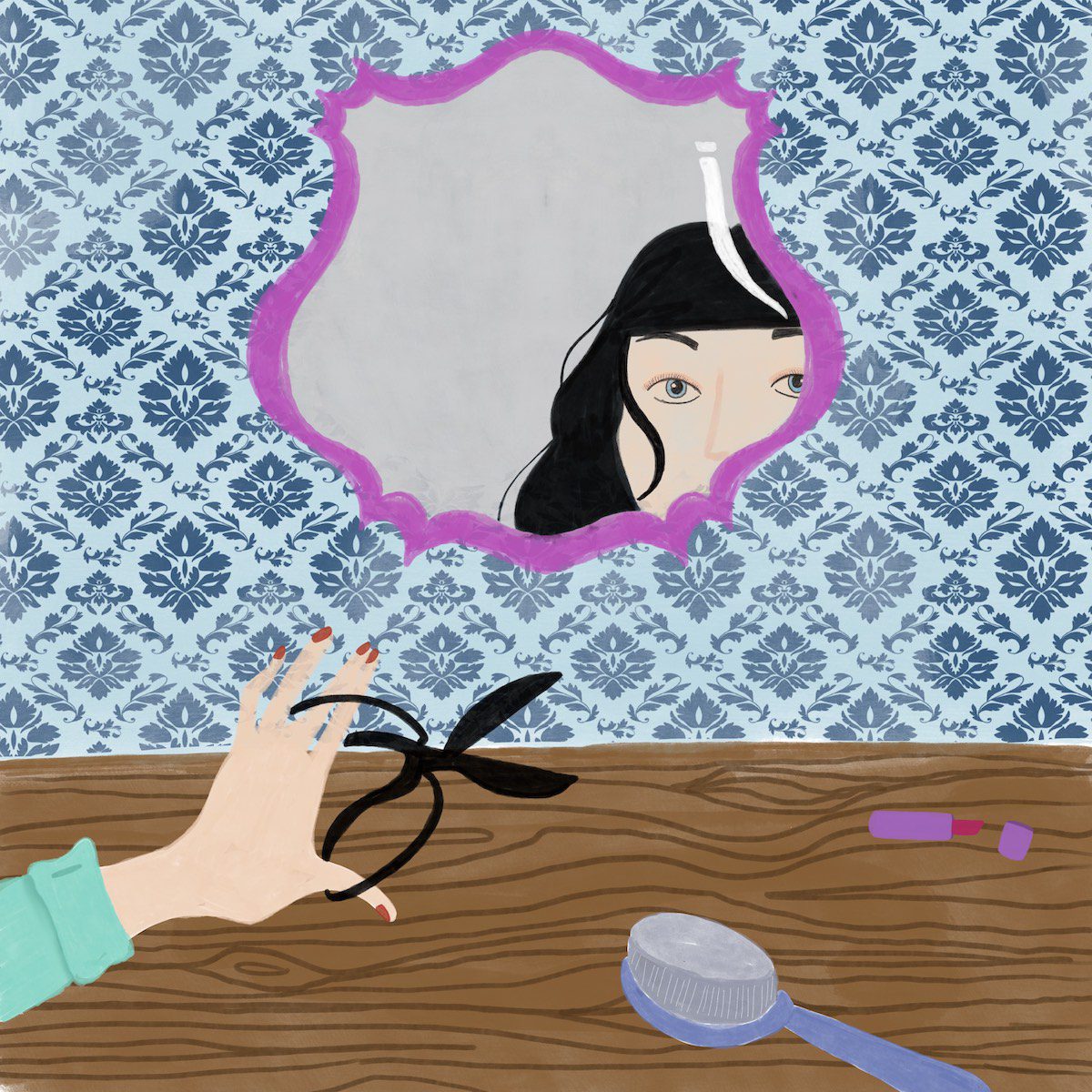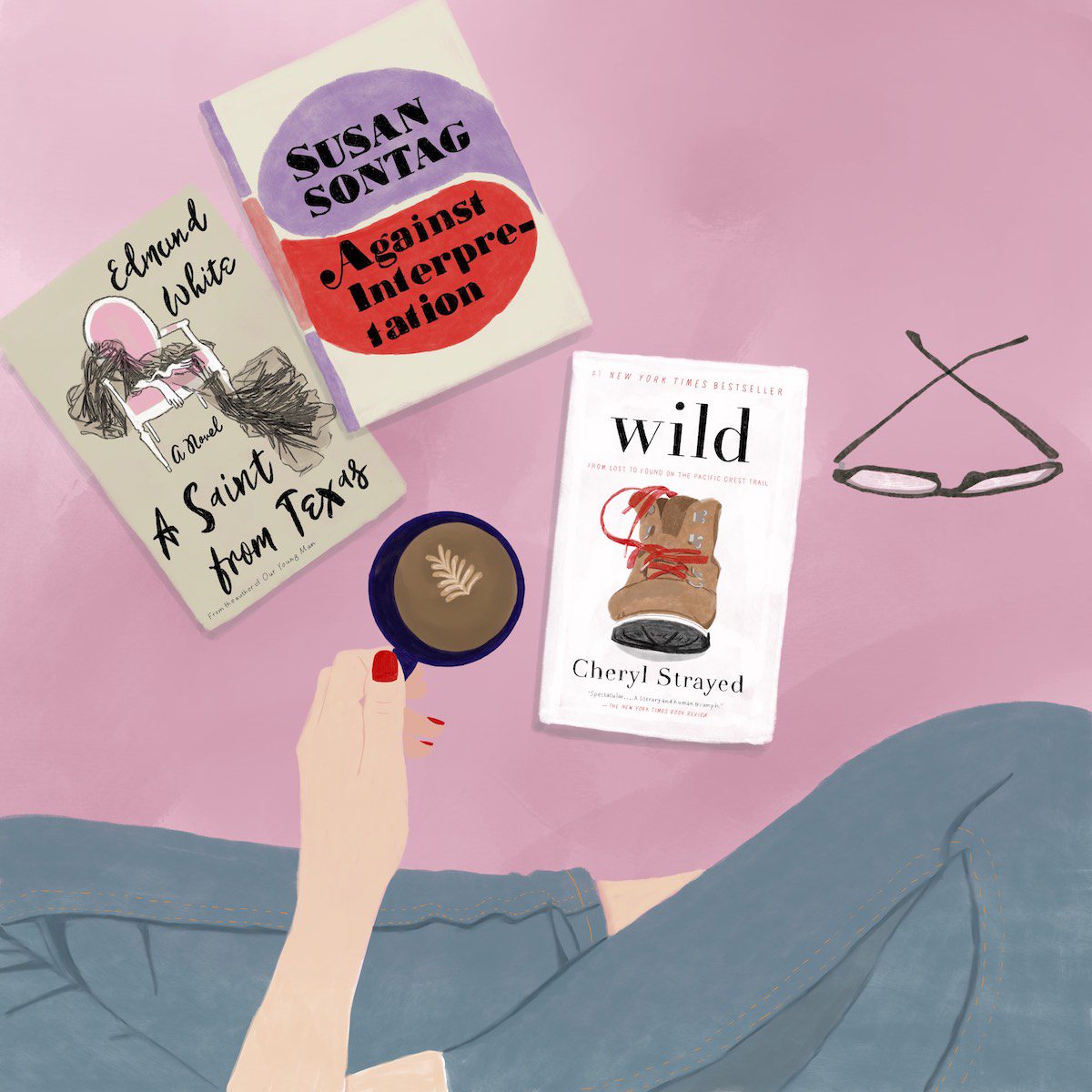
Let me explain to you what I looked like at nineteen. Physical self-description is one of the harder things for a memoirist to do. Especially a female American one. Self-deprecation is expected, and too easy—no one will be put off by you if you say you thought you were fat or that something was aesthetically “wrong” with you, even if the photographic evidence suggests otherwise. This is expected of American women and girls. But to state in some unqualified manner that you were attractive is a surefire way to discontinue a reader’s sympathies.
I did think I was fat, and the photographic evidence proves otherwise. I had many common afflictions in relation to my physical self-regard. But I was a certain kind of pretty. I was a teenager of average height, average weight, with “child-bearing” hips, and disagreeable belly fat that could, by some but not all, be ignored, with long skinny legs, dark eyes, and long blond hair. At some point during my freshman year I learned I was on Sigma Chi’s “top ten” list—one of the ten girls the fraternity brothers had their eyes on, based on the photographs in the first-year “pig book” directory. I was the kind of pretty frat boys liked, which is to say, conventionally.
This did not make me popular with the queers overseeing the scene at Brown.
Just before the cheerful rainbow flag became the symbol of queer inclusivity, in the 80s and 90s, coming out meant exiting one geography and staking claim in another. This was the era of the pink triangle. Silence equaled death. Americans, young and old, died of AIDS while their government did nothing to address the epidemic. Young queers were regularly cut off from their families and celebrities deadbolted themselves in closets. Queer life was legitimate subculture and you were in or you were out. If you identified as bisexual, wavering back and forth between society and its fringes, you were probably just not daring enough to live out as gay. Perhaps that applied to me, I agonized. If I were brave, I might reject male domination in the form of heterosexuality absolutely, pleasing both the Catharine MacKinnon who now lived in my head and the queer social overlords with their mistrust of bisexuality. But I still hadn’t mustered the bravery to come out at all in any public way.
A flyer tacked to a tree on the quad announced a meeting of a group called QUACO: Questioning and Coming Out. I burned the meeting details into my brain. I chided myself that going to a university-sponsored meeting was a dumb way to come out. Most girls came out by shaving their head and sleeping with a known lesbian or their “best friend.”
I had so far slept with one girl. It had been one of the most flustering experiences of my life. The event was orchestrated by the boy I’d just started dating, who had intended it as a threesome. (Of course.) H. arrived drunk at my dorm room and we sat on the carpet remnant between my bed and my absent roommate’s bed, talking as H. chain-smoked Camel filters, and then we had tentative sex on the carpet, each of us apparently waiting for the other’s instruction. Afterwards, when I saw her, in the dining halls or with mutual friends on the quad, she iced me absolutely. “Hi, H.!” I would cry out hysterically, and she would mutter “hi” and brush past me. I had never been treated like this by a boy or experienced anything of this kind.
A year later H. would arrive once again unexpectedly at my dorm room door, sober this time, and ask to come in. She would apologize and explain that she hadn’t known how to act at the time. She’d been sleeping with a lot of people in a self-destructive way. I had clearly not been looking for that kind of encounter, and considered sex-as-self-destruction an alien idea. As far as I’d been concerned I was at her mercy, since she had been with women before and I had not. She’d had no idea what to do with that power. We were friendly after her apology, but in the months after we’d slept together, during which time I’d seen that flyer tacked to a tree, I was utterly shaken. But I was also electrified. I’d crossed a line and owned a new secret life. There was no going back.
On the evening of the QUACO meeting, I ascended the stairs to the second floor of Faunce, heart thumping, and slid into the meeting room. I froze in horror as my foot crossed the threshold. Out of the six thousand undergraduates at Brown there were maybe four or five students who had also attended my small high school. And there, perched on the desk in the position of greeter, was someone I knew from high school: Daniel, the editor of my high school’s literary magazine before I became editor.
“Alden?” he asked, his face twisted in surprise.
“Daniel?” The rest of the room grew quiet and stared.
“What are you doing here?” he blurted.
Of course Daniel, a fellow former-closeted high school acquaintance, would not rat me out with bad intentions. But now my anxiety had doubled down. There was no pretending I could keep my queer existence a secret much longer. Simultaneously, Daniel’s reaction confirmed that queers looked at me and didn’t recognize me. Part of the problem was that I was known to have boyfriends—Daniel had known more than one. But the bigger problem, in the broader social context, seemed to be the hair.
I stood in front of my dorm bathroom mirror and pictured my face without the frame of my hair. My hair ended halfway down my back. It was thick and honey blonde and straight with occasional luxurious waves. No way was I cutting off this hair.
Until the very end of college, whenever I climbed the stairs to the queer-hosted parties on Ives street, the queer at the door taking cash marked my hand with the symbol for Straight, and then smirked at me when I protested. Sorry, girl. Everything about you says straight.
How could I square the straight vibe I sent the world with the fact that the rare, explicit lesbianism in Henry & June exhausted me with desire so strong that I returned from the movie theater to my dorm room and collapsed on the floor?
I was fiercely queer, I knew; but I also dwelled in a house with an escape hatch. I was attracted to women, but I was also attracted to men; my body understood this to be absolutely true. This meant that I could decamp, at any time, to the safe area of my identity, claim the social benefits of long blond hair, the source of my femininity, the symbol of my straightness. What if my attraction to men really was a social construct I’d embodied, and the thing holding me back from my true life was fear of losing these privileges? Did that snuff out the love I’d experienced with boys in the past—which had indeed felt very real? I agonized over my identity options, trying to understand who I was at my core and how that fit in with who I wanted to be.
My friends, meanwhile, didn’t care how I presented or identified. I’d taken a fiction workshop with gay icon Edmund White and started meeting him outside of class for lunch. He was fifty-two, a ground-breaking writer who wrote gay stories for gay people that straight people also happened to read and revere. Ed had come out in a far more hostile time and place, showed little interest in identity politics, and was the kindest, friendliest intellectual I’d ever met. He might drop a comment into the conversation about a tiff he’d had with Susan Sontag in response to my social laments.
“You can be a lipstick lesbian!” he said. Ed didn’t care that I both craved gay community and also wanted to have boyfriends. This just gave me more to gossip about and Ed loved gossip. The server at one of the cafés where we met was a friend of mine from classes. “Hi Alden! Is this your dad?” she asked. “No, I’m her professor,” Ed told her, adding, “We’re having an affair!” He turned to me with his boyish grin as my friend’s mouth dropped open. Ed was a paragon of not caring what people thought. But despite the friendships and community I already had, I still felt something inside me was confused beyond resolution.
I did not yet understand Cheryl’s idea that bravery was a choice. That you were the only one who could manage the level of your fear. I wanted the world to bend around me. To become, in a snap, a place without homophobia, without sexual violence built into everyday life, where I could have long hair and be attracted to both boys and girls and not want to punch people in the face all the time (the men who’d dragged Anita Hill, for example) because they would stop being people who deserved to be punched in the face. I had no “radical empathy” for myself or for anyone else. I didn’t understand how methodically and slowly ideologies needed to be dismantled. I didn’t know how to have empathy for people I disagreed with, who were products of these ideologies.
I only knew I was going to have to find a way convert my ferocity into actual strength. Potentially so I could be in a better position to punch someone if I needed to defend myself or righteousness. That was my idea of bravery at age nineteen.
Since I did not understand that I could take the path of learning bravery and confidence for myself, I decided Outward Bound was going to do it for me.
***
Rumpus original art by Kateri Kramer.
***
Excerpted from The Wanting Was a Wilderness: Cheryl Strayed’s WILD and the Art of Memoir by Alden Jones. Copyright © 2020 by Alden Jones. Reprinted by permission, courtesy of Fiction Advocate.







